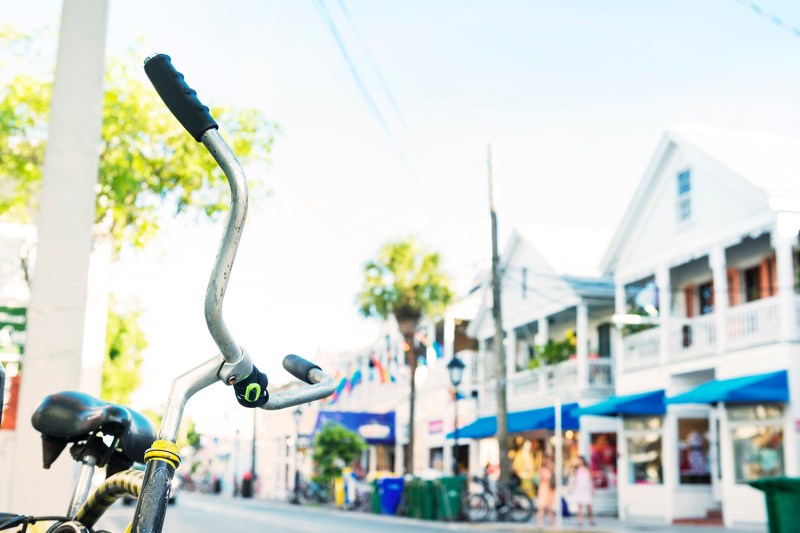
The rental car apocalypse is upon us. Gone are the pre-pandemic days when you could book a vehicle at the last minute and still be assured of scoring a deal. This summer, prices are high and availability is startlingly low. Waiting till the last minute might land you a $200-a-day deal for a mid-sized vehicle, or even no vehicle at all. How did this happen? Over the last 12 months, many car rental companies (those that didn’t declare bankruptcy) slashed their stocks in order to stay alive. Now that Americans are hitting the road once again, rental outfits simply can’t meet the demand.
While you might have to put the great American road trip on hold, there’s no need to cancel your travel plans altogether. There are many places where you can still plan a rewarding getaway. In truth, it can be liberating to travel without a car. Not only will you be doing the Earth a favor by reducing your carbon footprint, you won’t have to worry about the hassle of long lines at the rental counter, dealing with heavy traffic on unfamiliar interstates, or hunting for a gas station before you return the vehicle (or dropping it off on “empty,” which entails its own special brand of white-knuckled anxiety). Car-free sometimes means carefree, and going green never felt so right.
New York City & the Hamptons
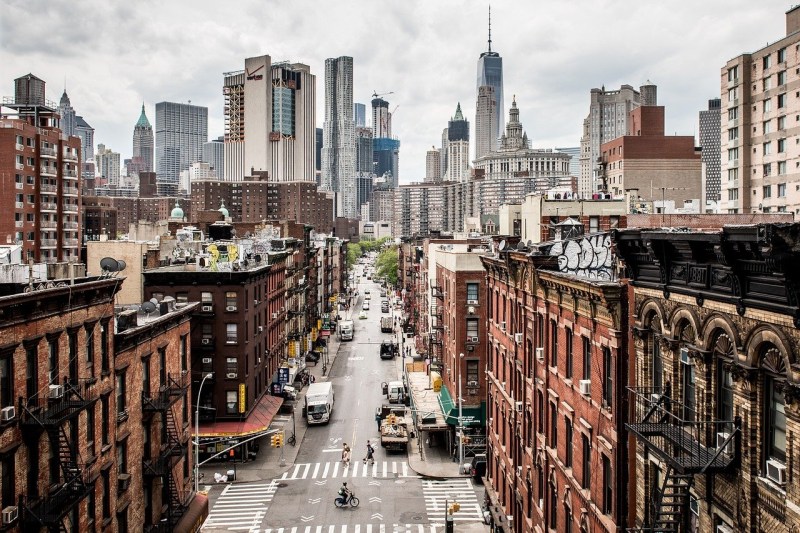
The Big Apple is an obvious choice when it comes to traveling sans voiture. Gridlocked traffic, expensive parking garages (plus impossible to procure street parking), and one-way streets suddenly blocked with a giant moving/garbage/grocery delivery truck are just a few reasons you’ll be glad to ditch the Nissan. The subway is an easy way to get around, and taxis are always plentiful (except when it’s raining), but there are countless other ways to explore. The city’s bike-sharing network, Citibike, has over 1,000 stations spread across Manhattan, Brooklyn, Queens, the Bronx and even parts of New Jersey. It’s quick and easy to check out a bike and head across town, via New York’s 1,300-plus miles of bike lanes. New York’s waterways provide an even more scenic way of getting around, with NYC Ferry service sailing between key waterfront neighborhoods in Manhattan, Brooklyn, and Queens. There’s also the good old-fashioned pedestrian transport: Crossing any of the bridges over the East River by foot around sunset can be a magical experience.
You needn’t limit your New York travels to the city. You can combine an urban holiday with some beach time by heading out to the gorgeous coastline and upscale towns fringing Long Island’s south shore. The train operated by LIRR gets you to the Hamptons, where you can indulge in beachside relaxing (or surfing if you head all the way out to Montauk) as well as fine dining and summertime revelry.
Read more: New York City Travel Guide
Boston & New England
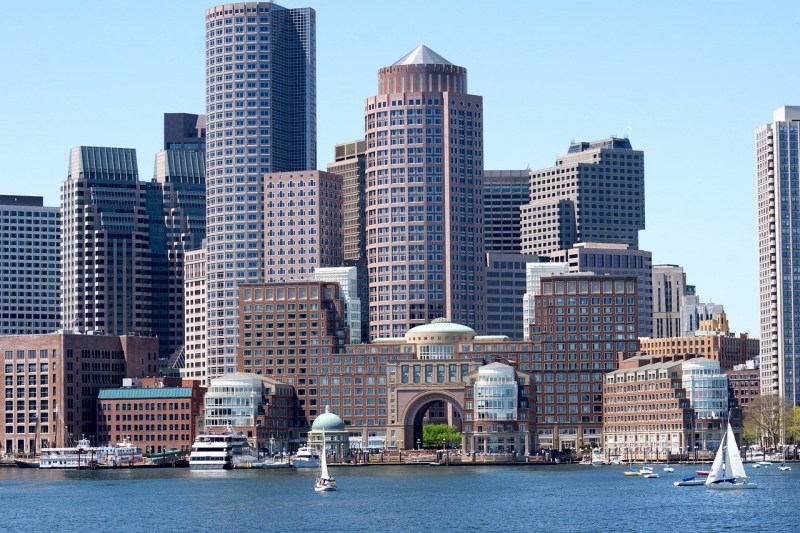
One of America’s oldest cities, Boston has a remarkably compact downtown that’s ideal for exploring on foot. In fact, you can walk across the heart of Boston in about an hour. At the epicenter of the city lies leafy Boston Common and historic sites like the Old State House, with the Italian neighborhood of North End just a short hop to the north. Getting behind the wheel is pure folly here, and you’ll understand why frustrated, aggressive drivers call one another “Massholes.” You can avoid the stress by getting around on the “T” — a venerable subway system, which radiates out from downtown, and gets you to Cambridge, the Seaport District, Back Bay, and Fenway. Boston is also a great place for cycling. By grabbing a Bluebike (the city’s bike-sharing network with 300 kiosks) you can often reach your destination faster on two wheels than four.
Boston makes an excellent gateway to further adventures in New England. You can take the MBTA Commuter Rail to reach fascinating towns like Concord, Salem, and Plymouth. Amtrak’s Downeaster takes you up to Portland, Maine’s most dynamic city — and another appealing place to explore without a car. You can also add some boat travel to your itinerary, taking the ferry out to Provincetown on Cape Cod, or even boating out to Nantucket (take the train from Boston to Hyannis, and from there book passage via the Steamship Authority).
Read more: Boston Travel Guide
New Orleans
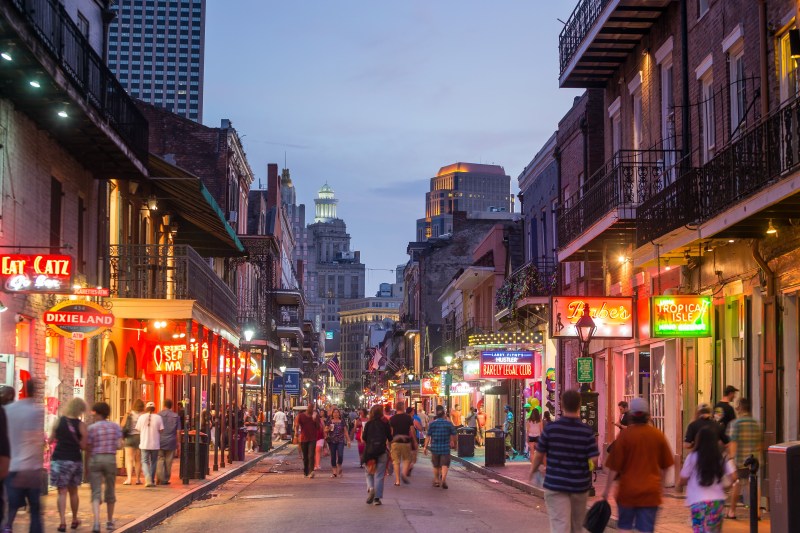
Longtime New Orleanians will warn you: This is not a fun city for driving. Comically battered streets (some with potholes so large they have names), baffling one-way lanes, plus the odd car break-in (and/or carjacking) make Crescent City the perfect place to go car-free. The French Quarter and nearby neighborhoods like the Marigny and the Bywater are delightfully walkable, and when you need to get elsewhere, it’s a quick rideshare away. Some of New Orleans’ modes of transport are attractions in themselves: The army-green St Charles Ave streetcar is the oldest continuously operating streetcar line in the world. The 1835 line trundles past gorgeous mansions along its namesake avenue, passing beneath live oaks so thick with greenery they shade the entire block (a welcome relief during the sweltering six-month-long “summer”).
Read more: New Orleans Travel Guide
Key West
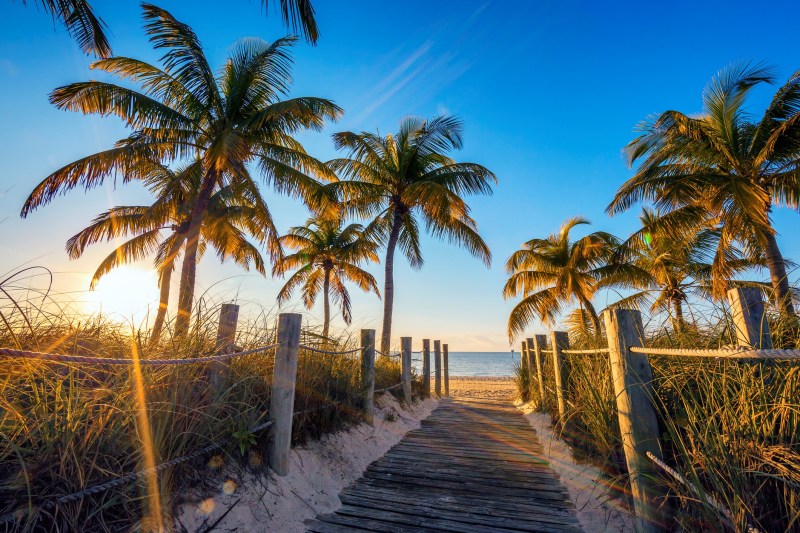
Sitting pretty at the end of Florida’s Overseas Highway, Key West feels like a world removed from the continental United States. In fact, it’s closer to Havana (105 miles) than to Miami (164 miles), and its multicultural diversity (Cuban, Bahamian), bohemian spirit, and tropical air give Key West a vibe more Caribbean than Floridian. Yet you won’t need a passport to visit the self-declared Conch Republic — despite whimsical attempts back in the 1980s to gain status as a micronation, the island is welcome and open to all. You also won’t need a car here. Just seven miles square, Key West has a walkable center, though bicycles (freely available at most guesthouses) provide handy transportation when you need to go more than a few blocks. Parking is pricey and inconvenient and since Key West in many regards functions as a floating bar, you won’t really have much need for a vehicle here anyway. Key West has its own small airport, though you can also catch a shuttle bus here from Miami (airport or downtown). For a bit more adventure, take a speedy catamaran operated by Key West Express from Fort Myers Beach.
Read more: Key West Travel Guide
San Francisco

Easily one of America’s most beautiful cities, San Francisco is the place of Victorian houses, hilltop neighborhoods, fog-swept coastline, and countercultural creativity. For locals, it’s also the land of Muni, Bart, CalTrain, and other nebulous transportation acronyms. The steep hills, one-way streets, and complete absence of available street parking make the City by the Bay a veritable Death Star for would-be drivers. Though cycling here is tough, there are plenty of convenient ways to hop around town. The Bart (Bay Area Rapid Transit) runs underground through San Francisco, connecting the Mission district with the Embarcadero via the Civic Center and Union Square area. It continues under the bay to Oakland, Berkeley, and other sunnier spots on the East Bay. There’s also an extensive above-ground network of buses, streetcars, and cable cars operated by Muni. Wherever you’re heading, there’s public transit to get you there, and you’re sure to meet some interesting characters along the way (isn’t this what travel is all about?). Our favorite route is the F-Market Line, a photogenic streetcar that takes you along one of the city’s most eye-catching avenues, as it runs for six miles from the Castro up to the ferry building, then follows the waterfront up to Fisherman’s Wharf.



